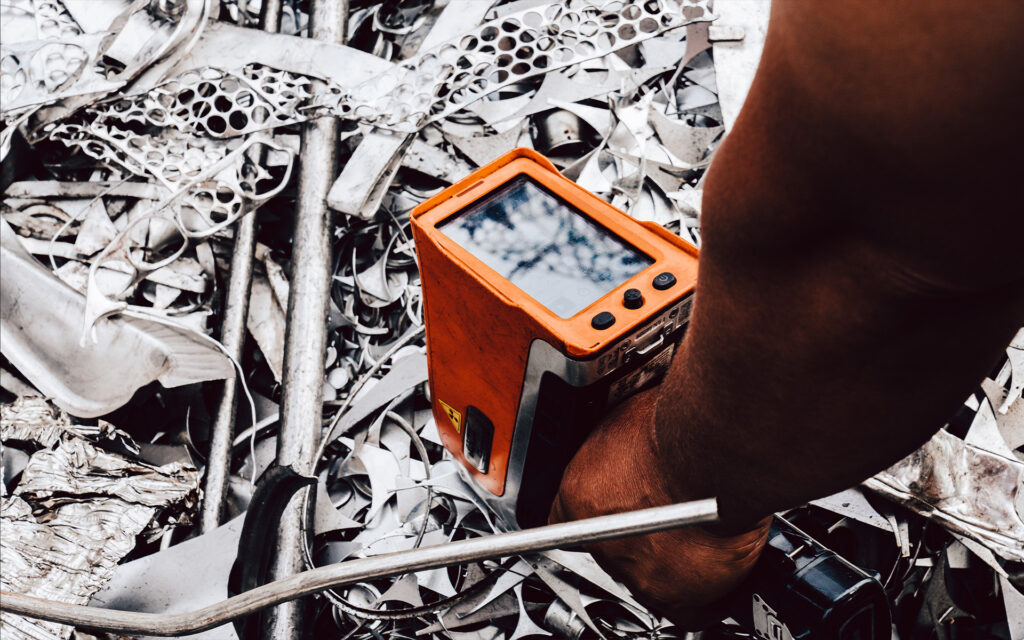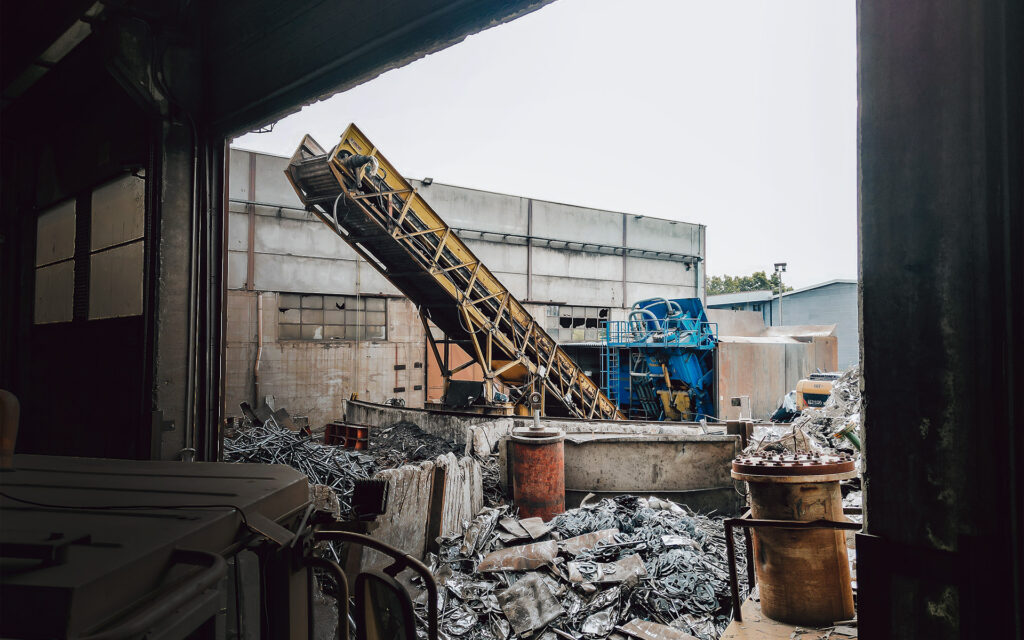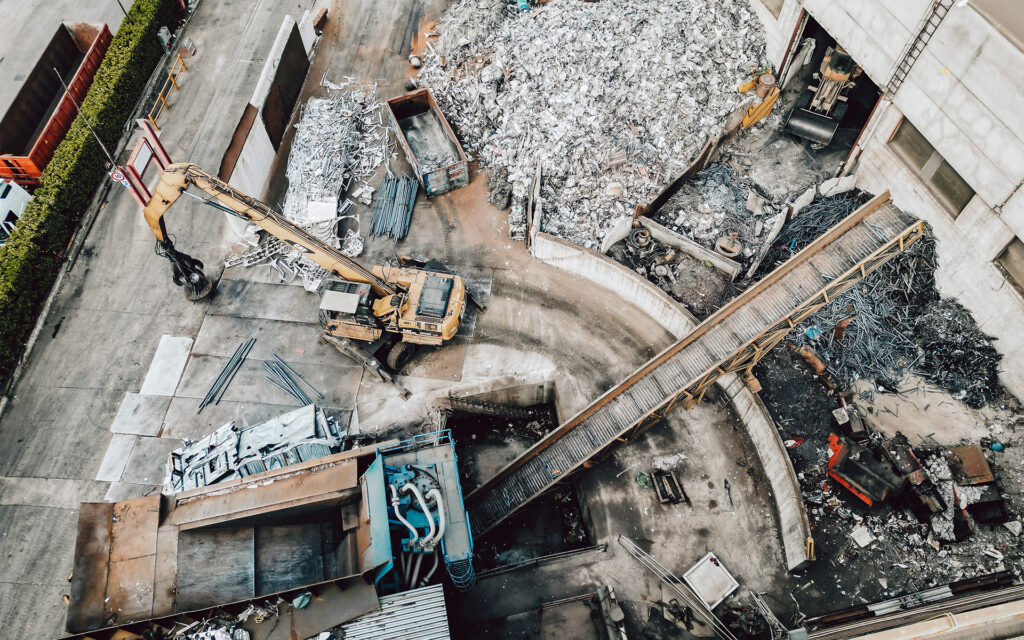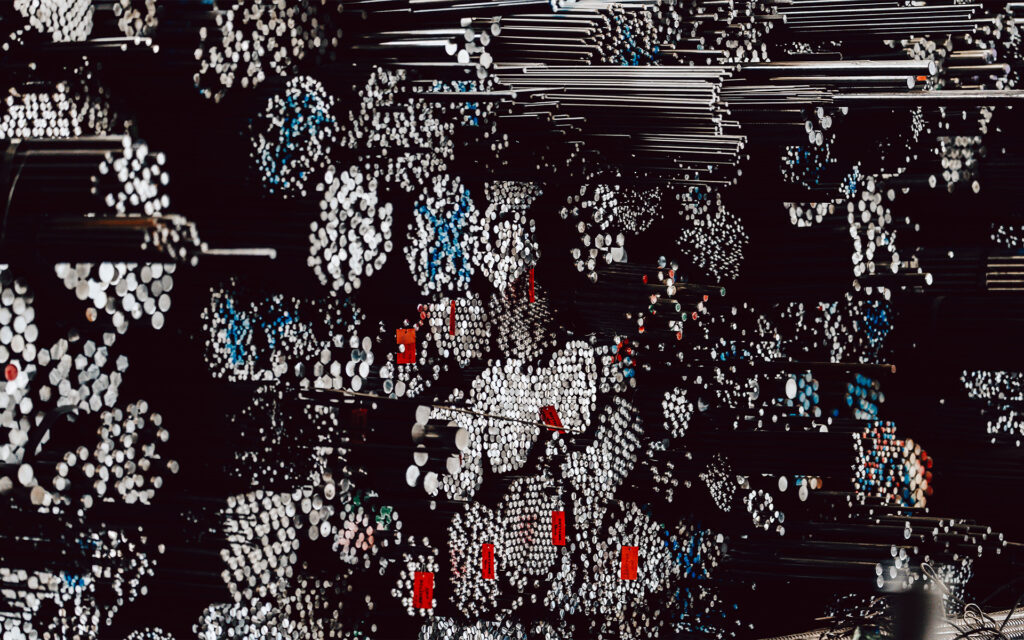PROCESSING RECYCLED STEEL
Analysis and Sorting
The recycling process for metal waste, aimed at producing recycled steel, always begins with a thorough analysis of the incoming materials. These are classified and sorted based on their specific chemical and physical properties. Our control procedures include:
Radiometric control: To detect the presence of radioactive materials.
Chemical analysis: To verify and separate different types of materials.
Manual sorting: To remove unsuitable materials or pieces that don’t meet size specifications.
Semi-automated sorting: To reduce the presence of impurities.
Magnetic sorting: To remove magnetic materials.
Induction belt sorting: To separate non-ferrous materials.



PROCESSING RECYCLED STEEL
Physical processing:
After analyzing the incoming materials, the next step is physical processing, which is crucial for optimizing transport and improving the efficiency of steel mills during remelting. Compacted material ensures better storage management, energy savings during melting, and reduced emissions, helping to protect the environment. Our processing techniques include:
Shearing: Using our Vezzani PC1426 ACL shear, we reduce the material’s volume, producing secondary raw materials that are uniform and compact. We can load up to 27 tons into a 20-foot container.
Baling: We create small, uniform scrap bales measuring 30×30 cm and weighing approximately 80 kg using our Comir press.
Chip grinding: With our Parfer Siti hammer mill and 5×5 grids, we maximize weight and create a product that is uniform, dry, and oil-free.
Chip briquetting: We produce briquettes with a diameter of 15 cm and a weight of approximately 12 kg, made from ground, dry, and uniform turning chips.

OMOGENEITY OF THE MATERIAL
We ensure that outgoing materials are homogeneous and of high quality, ready to be reintegrated into the production cycle. This ensures greater efficiency in melting processes and reduces environmental impact.
